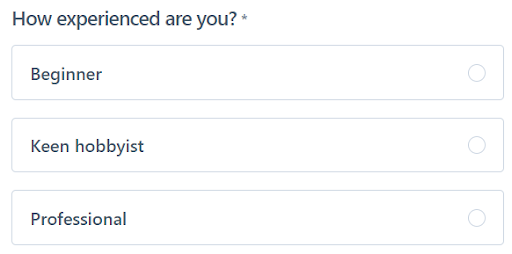Very few people realize just how powerful an advanced tagging strategy can be.
Sure, you can use them to define the next email someone will receive, but that’s only the tip of the iceberg.
If used correctly, they can be a key tool for finding weaknesses in your funnel, optimizing sequences and more!
1) Find which lead magnet brings in the best leads
Knowing which lead magnet is the most popular is good, but knowing which one brings in customers is even better.
Unfortunately, the two rarely match up. It is very common for businesses to have a highly popular lead magnet that only attracts tire kickers who don’t become paying customers.
So if you’re not doing so already, tag each contact with information on which lead magnet they downloaded. We would recommend something like [Optin - Ultimate Tagging Blueprint], to record how they enter your funnel.
If your email platform records revenue, you can then wrangle data to give you some insights.
- Export the list of subscribers, then tidy it up so it is just email addresses, source tags and revenue.
- To see how much revenue came from each lead magnet, create a pivot table between the tag that’s applied for each lead magnet, and the number of leads and revenue that were generated by those contacts.
- Check out the revenue per lead magnet, along with the revenue per lead from each lead magnet.
If you run paid ads for your lead magnets, then this data is vital to ensure that you are getting a strong ROI.
2) Split testing entire email sequences
Split testing, aka A/B testing, is essential to optimize the performance of your nurture sequences. (Just make sure to use a split test calculator to confirm the winner!)
It’s tempting to just measure which sequence gets better open and click rates, but that doesn’t tell you which brings in the most revenue. (note: open rates are a lie anyway)
The good news is that an advanced tagging strategy gives us a way to test which sequence generates the most revenue, even if the purchase happens weeks later.
In order to run a split test in your emails, set up a fork (or decision diamond) in your campaign that randomly sends people down one of two paths. Tag each contacts with which path they’re sent down, such as [split-nurture_sequence-A], then again use a pivot table to calculate the revenue associated with each tag.
3) Find your best customer type
Lots of analytics tools will tell you about the device someone is using or the website that sent them to you. But, what about more human aspects?
You can ask new leads some quick questions when they sign up and tag them accordingly.
For example, maybe you want to know how many people downloading a lead magnet are newbies vs hobbyists vs professionals?

Give them a multiple choice and pass these details to your CRM or email platform.
Like with lead magnet tags, you can then analyze which group is most likely to become paying customers. If a group is performing particularly badly, then you can plan out new funnel tactics to better nurture them.
4) Measure if live webinars are worth the hassle
Do you run a live webinar? If so you’ve probably wondered whether it actually converts any better than a pre-record version.
Again, you can use contact tags to measure the difference.
Like with the email sequences, set up a fork (or decision diamond) in your campaign that randomly sends people down one of two paths. Tag each contact with which path they’re sent down, such as [split-webinar_versions-live], then again use a pivot table to calculate the revenue associated with each tag.
You will be able to see whether spending the time to run each webinar live is paying off in terms of eventual sales.
5) See the most popular follow up purchase
Increasing average lifetime value is the single best thing you can do to optimize your marketing. After all, there’s only so far you can reduce the cost per lead, but the revenue per lead is limitless.
So, what is the most popular 1-2 punch?
We recommend adding a tag of [customer-{product}] each time someone makes a purchase. Of course, you can then use a pivot table to match up pairs of products.
Look at which ones regularly occur together. There might be combinations which surprise you, which would be good to test as a potential upsell or with a multi-purchase discount.
Don’t want to wrestle with pivot tables?
I know I mention pivot tables a whole lot in the article, but the truth is I hate them.
If you want to avoid spending hours swearing at Excel, then try SegMetrics instead. Each of the insights we’ve covered can be answered with just a few clicks.
SegMetrics connects directly to your CRM or email platform, so you can analyze exactly who your best customers are and what is driving conversions.
Free video lesson
For a deep dive into using tags with your marketing, check out our free lesson. Hit the link below to go check it out right away and start building your advanced tagging strategy and improve ROI with our Ultimate Tagging Guide Course.




